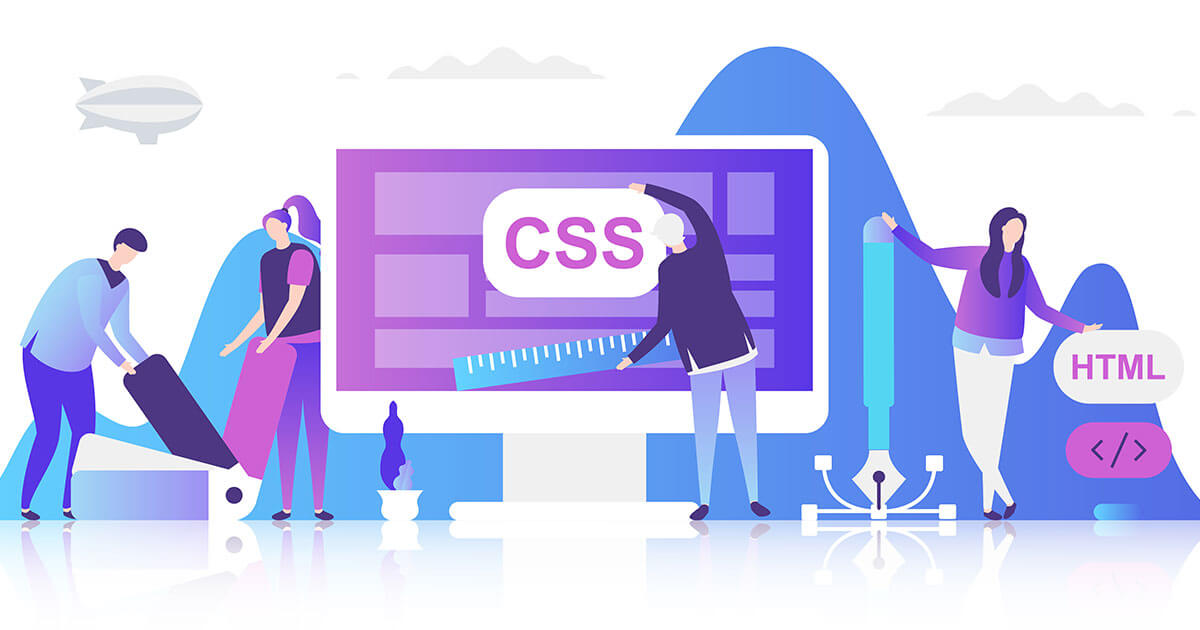In my previous article, I talked about the three types of web developers: front-end, back-end, and full-stack. I am a Front-End Developer, and I think it’s the most interesting of all three types. Why? Because front-end development is what makes a website come alive. It’s the first thing people see when they check out your website, and it’s what they use to navigate through your site.
A Front-End Developer is key to a great user experience. Let’s break down what a Front-End Developer is and their role in web development.
What is a Front-End Developer?
A Front-End Developer can also be referred to as a Front-End Engineer or Front-End Web Developer. They specialize in the coding and styling of a website’s user interface. They work with Web Designers and Back-End Developers to create a visually appealing and easy-to-use website. Front-End Web Developers are responsible for taking designs and turning them into code that people will use worldwide.
HTML, CSS, and JavaScript are the main languages that a Front-End Web Developer might use in their everyday workflow. HTML & CSS are primarily used to create the structure of your site, while JavaScript is commonly used for building interactive elements like buttons and menus.
The role of a Front-End Developer
Front-End Developer responsibilities include implementing visual elements like images, text, and videos on websites or web applications. They also work on the layout of each page to ensure that visitors will be able to access all parts of your site. A Front-End Web Developer will work on functions like drop-down menus, search bars, and so on. On top of all this, they need to ensure that the website is fully compatible with different web browsers and devices.

One of the main challenges that a Front-End Web Developer faces is cross-browser compatibility issues. Different web browsers can display websites in different ways, which can cause problems with the code. A Front-End Web Developer needs to be familiar with various browsers and their quirks, so they can account for them when coding a website.
A Front-End Developer job description might look like this:
“Front-End Web Developer needed to develop new user-facing features using HTML, CSS, and JavaScript. You will need to be able to work with the back-end team and understand how all the code fits together.”
or this:
“Front-End Web Developer needed to develop websites and apps using HTML, CSS, and JavaScript. You will be responsible for ensuring that users have a seamless experience when navigating through the site. It’s essential to ensure cross-browser compatibility.”
Front-End Developer duties might include:
- Creating the coding and styling for different pages on a website/application
- Making sure that coding works across all browsers
- Working with Back-End Developers to ensure compatibility across all platforms
How to become a Front-End Developer
My road to becoming a Front-End Developer started with a career in Web Design, but I quickly realized that I wanted to do more. I wanted to be able to write code and create websites from scratch. So I decided to focus my studies on Web Development, and I’ve never looked back.

If you’re interested in becoming a Front-End Developer, then here are a few steps that will help you get started:
1. Learn how to code
The most important thing you can do is learn how to code. The best way to start this process is by learning HTML and CSS. These two languages will help you understand the basics of web design and give you a solid foundation to build upon.
Once you have the basics of HTML and CSS down, it’s time to pick up some JavaScript skills. Many websites will be built using JavaScript, so it’s essential to know how the language works before starting your first job.
2. Get familiar with design principles
As a front-end developer, it’s essential to be familiar with design principles. This will help you create websites that look good and work properly on all devices. You can learn about design principles online or read books on the subject.
3. Build a portfolio
Building a portfolio is the best way to show potential employers that you have what it takes. You can create a website with all the projects that you’ve worked on, or you can use an online portfolio platform like Behance or Dribbble.
Your portfolio is your greatest tool, so you need to ensure that it’s up-to-date and reflects your skills. If you’re still in school, this should include all the projects you’ve completed while studying. If not, you can add other personal or professional projects that showcase your work.
Tools that the average professional uses in this field
There are many different tools and web technologies that Front-End developers use daily. Some of the most common ones include:

1. Code Editors
Code editors are a must-have for any Front-End Developer. They allow you to write and edit code quickly and easily. Many different code editors are available, and most are free to download.
Popular code editors include Visual Studio Code, Atom, and Sublime Text.
2. Web Browsers
Web browsers are another essential tool for front-end developers. They allow you to see how your code looks when used on a website. Many different browsers are available, and most are free to download.
Some of the more popular browsers are Chrome, Firefox, Safari, and Microsoft Edge.
3. CSS Frameworks
CSS frameworks are popular among Front-End Developers because they provide a set of predefined components and reusable code. This time-saving tool will help you build websites faster and easier.
Many different CSS frameworks are available, but some more popular ones include Bootstrap, Foundation, and Materialize. Each one offers a different set of features, so be sure to choose the one that best suits your needs.
4. Task Automation
Task automation is an integral part of front-end development. It can help you save time and speed up the development process. Many different task automation tools are available, but some of the most popular ones include Gulp and Grunt.
Gulp is a task runner that helps you automate your workflow. You can use it to compile your code, minify your CSS and JavaScript, and perform other useful tasks. It’s a powerful tool that can help you streamline your process.
Grunt is a task runner that was explicitly created for JavaScript tasks. It allows you to automate tasks such as linting, concatenating, and minifying files. It’s a popular tool among Front-End Developers because it’s easy to use and packed with features.
5. CMS Tools
Clients usually need an easy way to update their websites themselves, so many Front-End Developers work with Content Management Systems as part of their job. These tools make it easy for people who don’t have coding skills to edit website content without writing any code. A CMS allows them to easily add and delete pages, change the text on their website, and update their products and services.
There are many different CMSs available, but some of the more popular ones include WordPress, Joomla, and Drupal.
6. Project Management Tools
There are many different tools that Front-End Developers use to manage their projects and tasks throughout the day. The most common include Trello, Asana, Basecamp, and Jira.
Benefits of being a Front-End Web Developer
There are many benefits to being a Front-End Developer. Here are a few of the most important ones:

1. You’ll have a stable career
As long as the internet exists, there will always be a need for Front-End Developers. This is a stable career that will provide you with job security for years to come.
2. You’ll have the opportunity to work with amazing people
Working as a Front-End Developer means working with other people, including Designers and other Web Developers. This can be an excellent opportunity to learn from some of the best professionals in the industry.
3. You’ll stay up-to-date on the latest trends
The field of front-end development is constantly changing, and as a Front-End Developer, you’ll need to be up-to-date on the latest news and technologies. Many tools can help you keep track of new developments.
4. You’ll be able to work from home
The pandemic has forced people worldwide to change the way they work. Many people are now working from home, making it easier for Front-End Developers to find jobs. Many Front-End Developers choose to work from home as a freelancer or as part of a remote team.
5. You’ll earn an excellent salary
Front-End Developers are in high demand, which means they can earn high salaries when working full-time. Some jobs may require you to work in an office, but this could be in addition to working from home.
Salary expectations for this profession and how it can be increased with experience or education
Salary expectations for Front-End Developers vary depending on the location, but they typically range from $60,000 to $90,000 annually. However, with experience and education, Front-End Developers can earn up to $120,000.

When a Front-End Developer begins their career, they will typically start as a Junior Front-End Developer. Since companies are always looking for talented Front-End Developers, a junior can work their way up from there. With experience comes pay increases, so those who have been in the field of web development for some time can expect to be paid a higher salary.
Coding boot camps are a popular way to learn how to code. I completed a coding boot camp at the UCLA Extension that taught me the basics of programming and web development. This was an excellent way to learn new skills and make connections in the coding community. The boot camp offered various courses that taught me everything from HTML and CSS to JavaScript and React. I also had the opportunity to work on real-world projects with teams of other students.
Conclusion
I hope this article has helped you understand the role of a Front-End Developer, what skills are needed to succeed in this profession, and how much it pays. If you’re looking for an opportunity with room for growth, then becoming a Front-End Developer may be the right career path for you!
If you have any questions about the role of a Front-End Developer or want to know more about what it takes to succeed in this field, please don’t hesitate to contact me. Leaving comments below is a great way to ask questions and provide feedback. I would be happy to answer any of your questions and help you get started on your journey to becoming a Front-End Developer!
